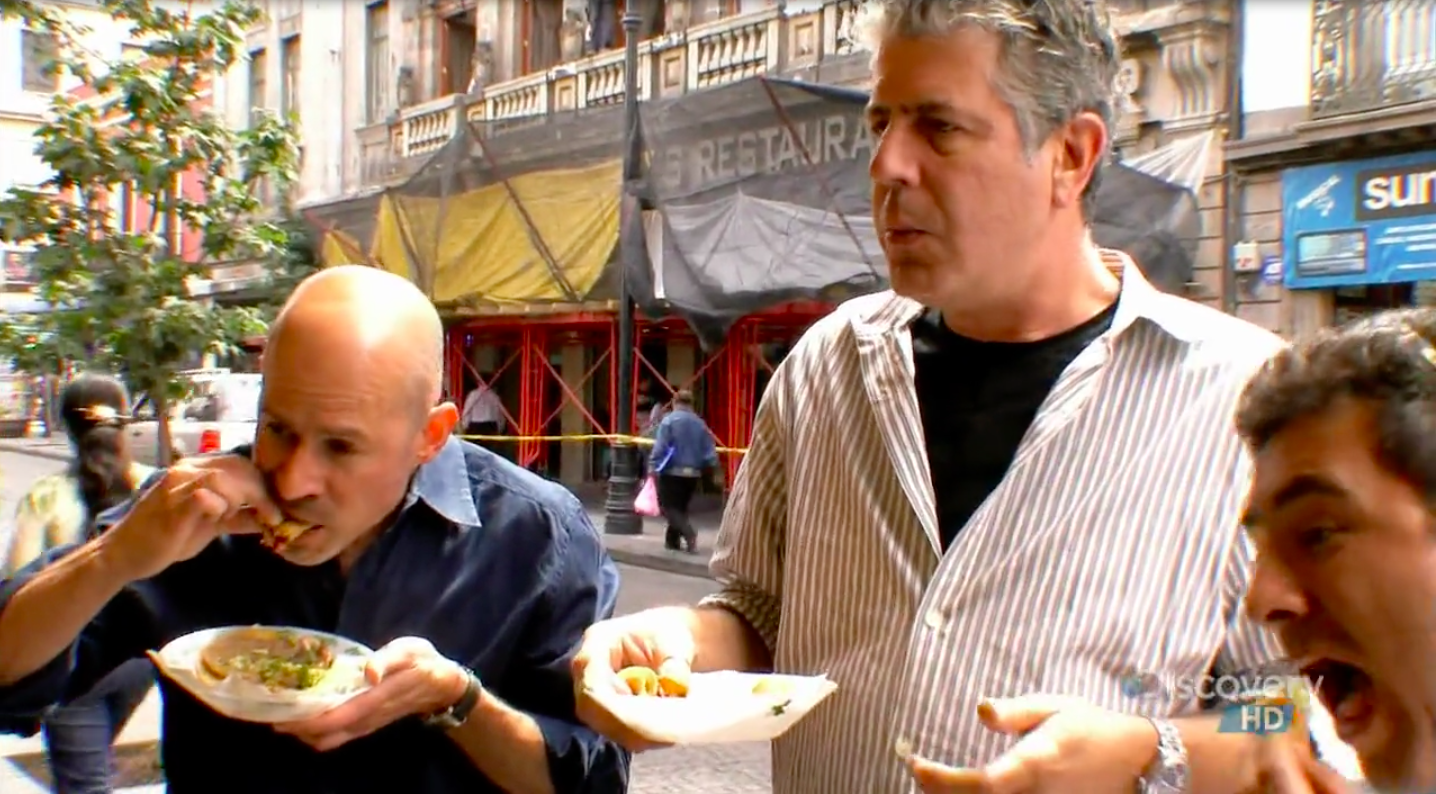In 2009, Anthony Bourdain came to Mexico City to film an episode of his show No Reservations. Someone in his production company found my book, First Stop in the New World, and they hired me to help them find taco stands, cantinas, and hole-in-the-wall eateries from which they could film. They even put me on camera in a couple of segments, for instance eating tripe tacos with Bourdain from one of my favorite stalls on Calle Bolivar.
The crew was here for about a week, but Bourdain didn’t get airdropped in the city until the last minute, the night before filming began. He struck me as exactly as he appeared on camera. In the van moving between locations, he spewed monologues full of dirty jokes and scatological references. When the clock struck 1:00 pm, he wanted to know where was the closest place to get a tequila. His energy and sense of fun were infectious. Those of us who were along for the ride, as well as the crew who worked with him, all seemed to enjoy ourselves.
Despite eating for a living, he was a slender man. While we filmed, I observed one of his strategies to stay that way. When they shot him eating something, he’d take one bite and leave the rest of the food on the plate. Usually a crew member would finish it for him. Unless he really liked something, such as the tripe tacos. Not only did he finish that taco, he ordered more.
Bourdain told me that, since he became a TV personality, he traveled all over the world to do lectures in front of groups. (I’ve heard that, before he agreed to do an event, he had a list of exigencies that rivaled that of a rock star.) He complained about the weariness resultant to being in perpetual motion, and I asked him if he ever thought, “I don’t really need to do this any more -- I can quit.” He looked at me like I was crazy, and explained that the kind of money he was being offered to make these speeches was impossible to turn down.
Walking down the streets of the Mexico City, many people stopped and asked for his autograph. One guy even had him wait while he called his wife, so Bourdain could say hello to her and realize that the story wasn't a figment of her husband's imagination. Bourdain was gracious and accommodating to all of the fans.
He was a constant champion of Mexico. He often made it a point to say that, when he ran the Brasserie Les Halles in New York, most of the people with whom he shared kitchen duties were immigrants. And that nearly every restaurant kitchen in New York was heavily staffed by them. He was extremely proud of Carlos Llaguno (in photo, above), who started out as a dishwasher at Les Halles, and ended up executive chef when Bourdain left the business to do his TV show. (Sadly, Llaguno died of cancer at age 38 in 2015.)
At one point, in the van between locations, Bourdain told me that he liked First Stop in the New World, but that he’d loved Travel Advisory — my first book, a collection of short stories. I was completely taken aback that he’d taken the trouble to read it. It is always a surprise when someone who appears to “have everything” commits suicide. A New Yorker profile of Bourdain, which appeared in February of 2017, hinted at a dark side. Still, life is a torment for a lot of people, and a case like this, where it becomes too overwhelming to bear, is always a tragedy. If you or anyone you know is thinking about suicide, the resources listed on this page might be of help.












